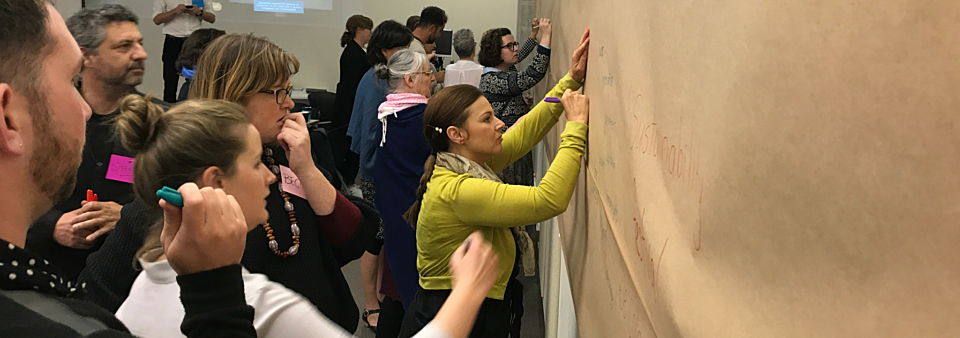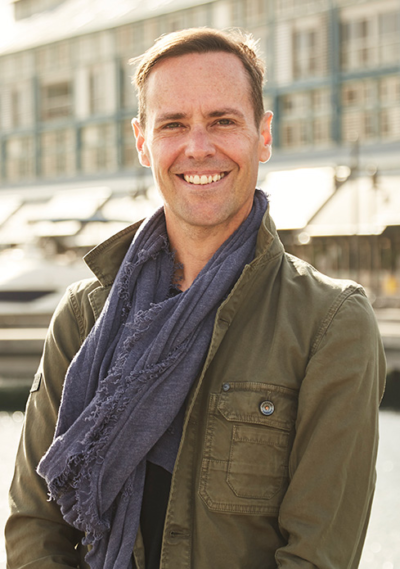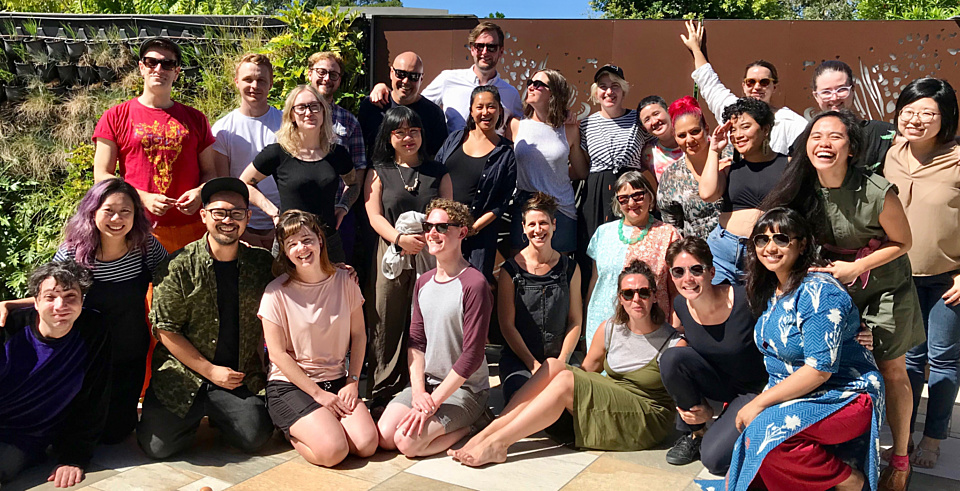The art of leadership at the Australia Council
Posted on 15 Jul 2018
By Matthew Schulz, journalist, Our Community
Are leaders born, made, or something in between? It's a tricky question, and one that's been debated since humans first sat around a fire deciding who was going to be in charge.
Nowadays, there is a host of organisations providing leadership training and skills, including ICDA, which incorporates leadership information in its Diploma of Business (Governance).
The Australia Council for the Arts - the federal government's arts funding and advisory body - provides specialist training for a nominal fee to selected upcoming and experienced arts leaders in a program that takes just 50 candidates per year.
The training caters to emerging leaders (the Future Leaders program) and to mid-career and established leaders (the Arts Leaders program).
We quizzed the Council's director of capacity building, Kevin du Preez, about the leadership programs, which are now in their eighth year.

Can a good leader be "made", or do some people just "have it"?
Both things come in to play. When it comes to identifying emerging leaders, traits play a key role. But when it comes to effectiveness, I think we all need to develop constantly.
There is a risk here: that we sometimes tap certain types of leaders on the shoulder for leadership positions based on certain traits - for instance, they are an extrovert or great public speaker - but we then are perplexed when they do not perform.

But for me, that just begs the question: what development did that leader need to perform well?
What do you think makes a good leader?
This is a complex question, and one that must be viewed in context, but I offer the following list of qualities that keep coming up when we work with leaders: engaged, good communicator, visionary, persuasive, courageous, responsive, confident, relevant, entrepreneurial, ethical, culturally competent, global, informed, thinks critically, inventive, creative, politically astute, generous, respected, resilient, connected and charming.
Our own candidates have nominated common "gap" areas for further study, including collaboration, diversity, moral leadership, cultural awareness, innovation, strategic thinking and advocacy.
What's different about leadership in the arts? And why is this program needed?
In the arts, unlike in some other industries, many leaders take on leadership not out of any desire or aim but out of necessity. In fact, many leaders in the arts shy away from using the term "leadership".
The arts ecology is always changing, and our sector is especially volatile and complex, with disruption a constant issue. Arts leaders must be able to tackle disruption and change with new skills and capabilities and respond to challenges in a creative way.
While the Australia Council has a long history of providing professional and leadership development, previous training focussed on backing emerging leaders with skills and capabilities as a form of "succession planning".
But we identified a gap: arts leadership programs that were financially and culturally accessible for artists and arts workers. And at the same time, we wanted to cultivate more change agents and cohorts of peers to support each other, because we know they will achieve more together
That's partly why the program is co-designed with the sector and facilitated by expert leaders from our sector, and the focus is on participants developing leadership through self-reflection and exploring the latest thinking around leadership models through deep interaction with peers and guests.
This all helps develop a clear understanding of their purpose and being able to lead others to achieve this with them. You need to be able to connect with the greater cause.
Of course, arts leadership - much like the definition of art itself - is a regularly contested concept, which is why we examine leadership through various lenses such as culture, philosophy, gender, art form and more. Our leaders also must have a deep understanding and connection with our First Nations culture and colleagues, and that is a key feature of the program.

The program involves up to three intensive residentials of up to six days, often in regional Australia, supplemented with up to four online gatherings, over six months for Future Leaders and a year for Arts Leaders.
These are often backed up with a secondment, mostly overseas, and a challenging group project.
We have also opened up the program through our Leadership Exchange program, inviting 200 other arts leaders to sessions in centres such as Dubbo, Hobart, Cairns, Gold Coast, and Adelaide.
Who can do the Australia Council leadership program?
We receive over 300 applications each year, but it is difficult to get into, with 50 positions available.
We keep these cohorts small, because it is difficult to do this kind of work with larger groups, but we encourage people to re-apply. For many applicants - even those who aren't successful - the process also helps clarify their leadership development goals.
The program targets arts leaders from across the arts and the Asia Pacific, with the aim of developing strong leadership to ensure our sector is thriving and sustainable, by investing in the development of the people who lead the sector.
Each year, we include four to six international participants in the group, who come as part of the Australia Council International Leadership Program (Asia Pacific), attracting students from India, China, Indonesia and the Philippines.
Participants include artists and managers from organisations of all sizes, as well as independent practitioners from every state and territory, representing every art stream.